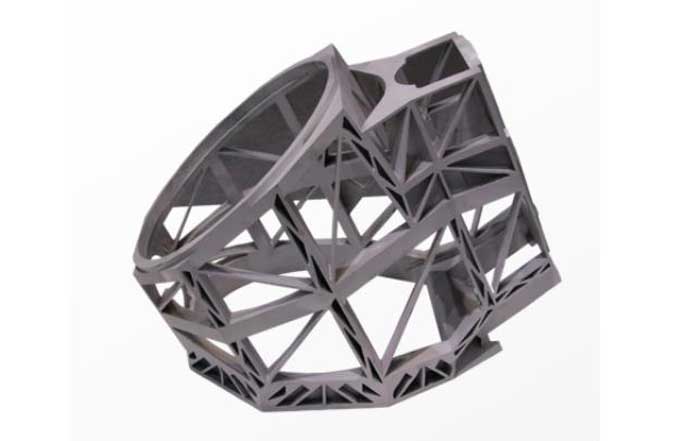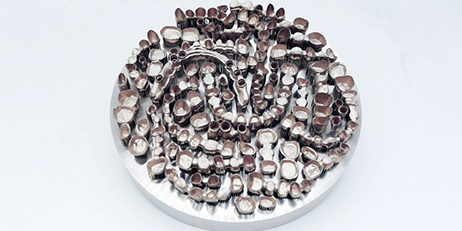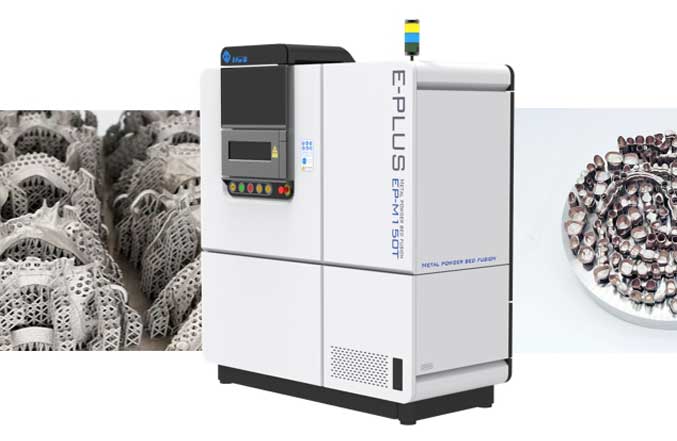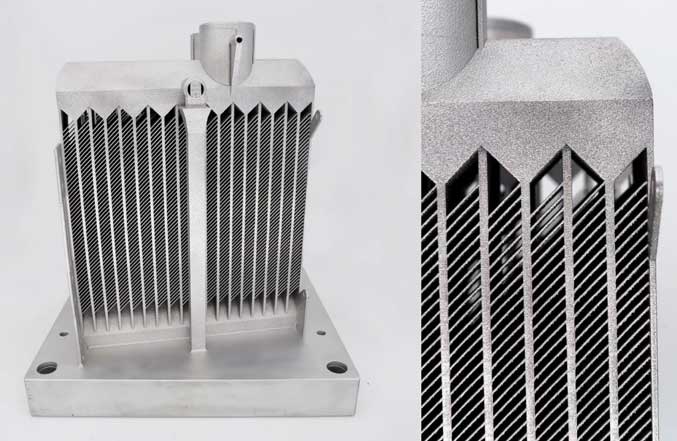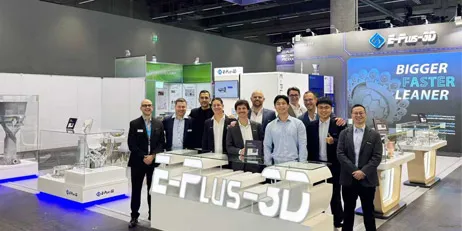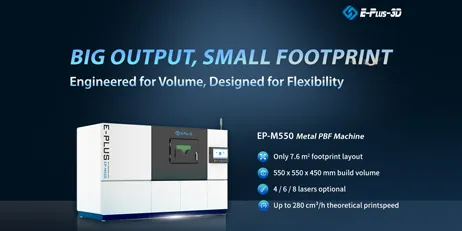3D Printing, also known as additive manufacturing, has been widely applied in the aerospace industry for many years. Last time, we talked about 3 Major Advantages of Metal Additive Manufacturing in Aerospace Industry. This time, we will guide you more about the most common metals for 3D Printing applied in the aerospace industry: aluminum and titanium.
Before that, let’s check out why these two materials are regarded as the most common metals for 3D printing in the aerospace industry. Whenever considering metals for 3D printing, three features come to mind before others. They are high strength, high stiffness and weight of materials. Under this circumstance, aluminum and titanium have gained a lot of popularity due to their lightweight and high-strength features in a wide variety of industries, especially in the aerospace industry.
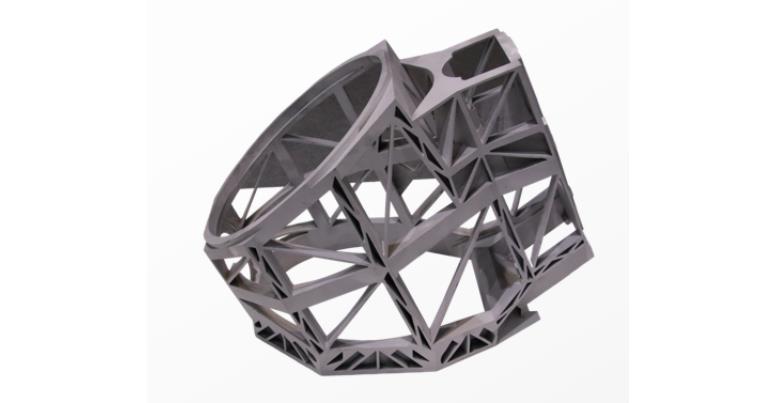
Frame printed by EP-M650 (Aluminum Alloy)
Aluminum vs Titanium:
Aluminum and titanium are both lightweight materials, but these are reflected on different aspects. Titanium is about two thirds heavier than aluminum, but it can reach the required strength with less material due to its inherent strength. Titanium alloy has been widely used in turbine jets and spacecrafts as its strength and low density can reduce fuel cost.
Aluminum is the most widely used and most common material regarding its lightweight feature. Besides aerospace, it’s also widely adopted in automotive industry in 3D printing.
As both aluminum and titanium are lightweight and high strength materials, which should I choose? Now let’s check their differences.
l Cost: titanium has higher cost than aluminum, but it has higher value with longer service life of titanium-printed parts. Aluminum is the most cost-effective material, so it can bring huge benefit for fuel saving.
l Corrosion resistance: both aluminum and titanium have excellent corrosion resistance feature, but data showed that titanium is more corrosion resistant than aluminum.
l Electrical and thermal conductivity: aluminum is a relatively good conductor of electricity, so it’s usually used to create heat exchanger. Titanium is not a good conductor of electricity, but it has high melting point, so it’s widely used in aerospace engines.
l Weight and strength: both titanium and aluminum are lightweight, but titanium has higher strength.
l Applications in aerospace industry: titanium is mainly used to produce parts like landing gears, fasteners, frames and other critical structural parts; aluminum is everywhere—it’s the most common metal on the earth, so it’s widely adopted, such as bulkhead, wing ribs, etc.
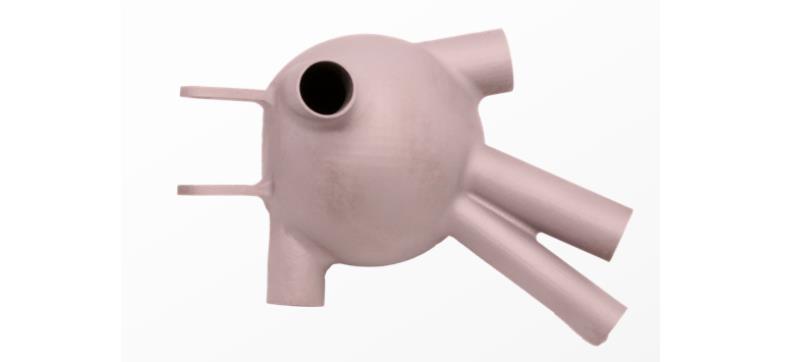
Helicopter Multi-dimensional Joint Sample
Conclusion:
The parts printed for aerospace industry should meet a variety of strict requirements, including lightweight, high performance, high reliability and low cost while most parts are complex and difficult to manufacture. With the continuous development and innovation of 3D printing technology in aerospace industry, both titanium and aluminum can meet the strict requirements, and there are more and more materials which will be applied in 3D printing for aerospace industry soon.
Eplus3D has developed a large-scale additive manufacturing machine for aerospace application: EP-M650. It adopts MPBF (Metal Powder Bed Fusion) technology, with a 655*655*800 mm3 build envelope and four laser systems to ensure a high efficiency printing production. The system can operate with various metal powders such as Titanium-, Aluminum- and Nickel-based alloys or Die Steel, Stainless Steel, Chrome Cobalt Alloys and other materials. It is suitable for the direct manufacturing of large-size, high-precision and high-performance parts in the aerospace, automotive and defense industries.
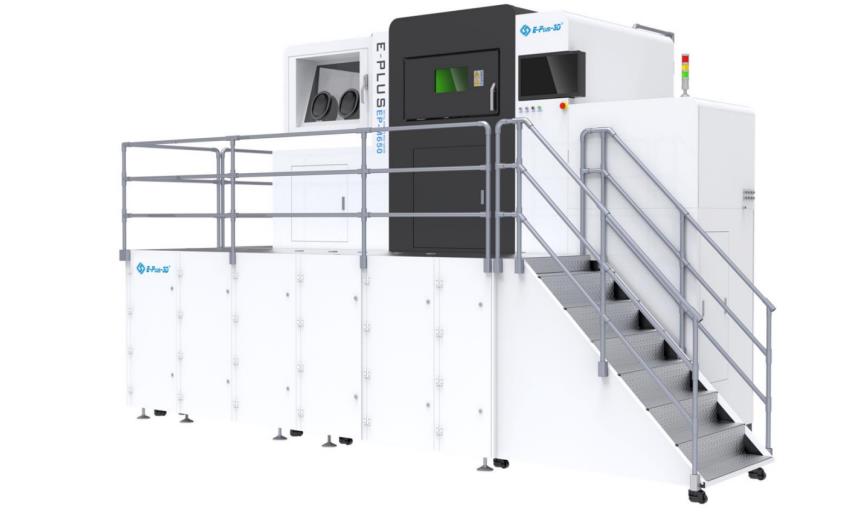
EP-M650 (Quad Laser)
Welcome to contact us for more additive manufacturing in aerospace!
